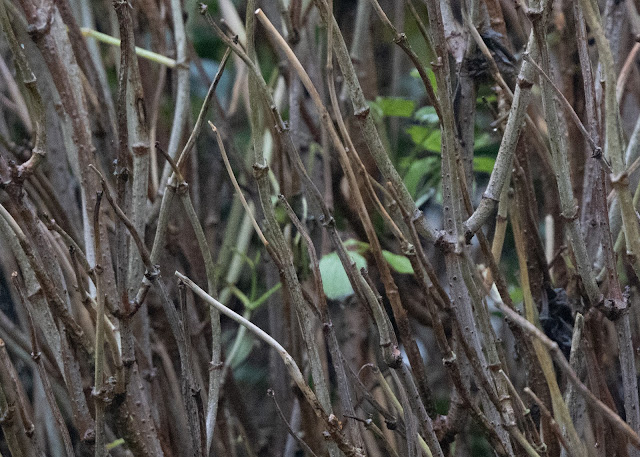This year I set myself two birding goals. Firstly, to add 20 new birds to my UK list. Secondly, to get some better photographs of some of the more common birds I had failed to photograph well in the past. Given the background of another grim pandemic year, which pretty much wiped out the first couple of months in lockdown, I was very pleased with the outcome. I’ve added a whacking 26 new birds to my UK life list and have manged at last to get half decent photos of Wood Warbler and Pied Flycatcher. Although my focus was not on a year list, I still managed a half decent total of 222, largely due to my week in Shetland in the autumn.
So without further a do here are my personal year highlights.
Bird of the year
This was oh so nearly dip of the year but, at the 4th attempt, I finally managed to life tick the elusive Belted Kingfisher in Lancashire. This was made all the more rewarding after two previous harrowing encounters with the infamous slope of death.
My runner up is the majestic Black-Browed Albatross that graced Bempton cliffs during the summer months. Watching an Albatross, which should be in the southern hemisphere, gliding effortlessly around the windy cliffs of Yorkshire was a truly mesmerizing experience.
Photo of the year
My choice here is the beautiful female Red-footed Falcon that graced Langford Lakes for a few short days in July.
Runner up goes to this very photogenic juvenile Red-backed Shrike in Shetland in October.
Dip of the year
 |
| It was here yesterday honestly! |
Up to the middle of December there really was only one candidate for this esteemed award, the Lancashire Belted Kingfisher, but it blotted its copy book by showing well on the 4th attempt as per above! So instead this award goes to the Shetland Rose-breasted Grossbeak based on the sheer annoyance factor of needlessly dipping this north American mega passerine. The excitement of seeing it found in Shetland on the morning we were arriving was soon tempered by the realisation that our tour leaders had decided not to go for it until the following day. Sure enough it either moved on or succumbed overnight leaving us staring at an empty hedge and rueing our luck while other island arrivals the previous day had gone straight for it. This dip alone has left me feeling that any further trips to Shetland will be self-organised!
Lord Snowdon one pixel award
There was the usual very heavy competition for this most coveted award. Collared Pratincole narrowly missed out on winning this for the third year in a row and hence keeping the trophy. Well, perhaps not that narrowly as I did not see one!
So, after much deliberation, this year’s award goes to this stunning image of the Greater Yellowlegs seen at the Loch of Strathburg RSPB reserve in October.
Shout out of the year
There really can only be one winner of this new award. The tour guide at Norwick who was trying to get one of his group onto an Olive-backed Pipit. After a number of failed attempts he resorted to a more direct route and called out “it’s on the spade you tw*t!”
Here is a small selection of other photos from this year.
 |
| Wood Warbler |
 |
| Two-barred Green Warbler |
 |
| Sanderling |
 |
| Red-flanked Bluetail |
 |
| Reed Warbler |
 |
| Great Reed Warbler |
 |
| Little Auk |
 |
| Blyth's Reed Warbler |
 |
| Northern Mocking Bird |
 |
| Garganey |
 |
| White-throated Sparrow |
 |
| White-tailed Lapwing |
 |
| Pied Flycatcher |
 |
| Whiskered Tern |
All that remains is for me to wish you all a very happy and bird filled 2022!
Footnote – my blogs are posted with sometimes rather imaginative spelling and grammar due to my extreme dyslexia!







So many amazing photographs of amazing birds!
ReplyDeleteExcellent - hope you have a good 2022, Jim! x
ReplyDeletecheers moth and you!
Delete